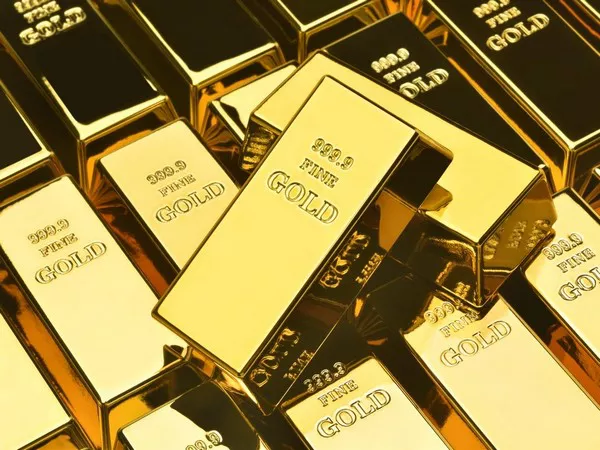In the world of numismatics, collectors and enthusiasts often seek out rare and valuable coins, hoping to find treasures that go beyond their face value. One such coin that has piqued the interest of many is the Sacagawea Gold Dollar, introduced in the year 2000 as a part of the United States Mint’s ongoing efforts to honor important figures in American history. However, despite their popularity and historical significance, most Sacagawea Gold Dollars are, in fact, worth just one dollar. In this essay, we will explore the reasons behind the value of Sacagawea Gold Dollars and highlight some exceptions that make certain coins more valuable to collectors.
The Sacagawea Gold Dollar: A Brief Overview
The Sacagawea Gold Dollar, also known as the Sacagawea Dollar, was first minted in the year 2000. It was introduced to replace the Susan B. Anthony dollar, which had never gained widespread popularity due to its similarity in size and appearance to the quarter. The new Sacagawea Dollar was designed to have a distinctive golden color and a larger diameter to make it easily distinguishable from other circulating coins.
The coin was named after Sacagawea, a Shoshone woman who played a crucial role as a guide and interpreter during the Lewis and Clark Expedition in the early 1800s. Her contributions to the exploration of the American West made her an important historical figure, and she was chosen as the face of this new dollar coin to honor her legacy.
Face Value vs. Collectible Value
When it comes to determining the value of Sacagawea Gold Dollars, it’s important to differentiate between their face value and their collectible value. The face value of these coins is one dollar, and that’s what you’ll receive if you use one to make a purchase or deposit it in a bank. However, the collectible value of these coins can vary significantly.
Collectible Varieties and Their Values
While the majority of Sacagawea Gold Dollars are worth only one dollar, there are exceptions that can fetch a higher price among collectors. These exceptions typically involve rare varieties, errors, or special releases. Let’s take a closer look at some of these collectible varieties:
2000-P Cheerios Dollar: One of the most sought-after Sacagawea Dollar varieties is the 2000-P Cheerios Dollar. These coins were included in boxes of Cheerios cereal as part of a promotion when the coin was first introduced. They can be identified by a slightly different design, and they are relatively scarce. In the collector’s market, a 2000-P Cheerios Dollar can be worth significantly more than its face value, sometimes fetching hundreds of dollars.
2000-P Wounded Eagle Dollar: Another notable variety is the 2000-P Wounded Eagle Dollar. This coin features an eagle design on the reverse side with a peculiar error – a misaligned eagle’s talon that appears to be wounded. This error has made these coins desirable to collectors, and they can command higher prices than standard Sacagawea Dollars.
2009 Native American Dollar: While not as rare as the previous two varieties, the 2009 Native American Dollar is still of interest to collectors. These coins commemorate Native American contributions to American history and culture. Some collectors seek out full sets of these coins, including both the Philadelphia (P) and Denver (D) mint versions.
It’s important to note that the value of these collectible varieties can fluctuate over time based on collector demand, market conditions, and the overall rarity of the coins.
The Value of Regular Strike Sacagawea Dollars
For the vast majority of Sacagawea Gold Dollars, the story remains quite different. Regular strike Sacagawea Dollars, those not falling into special varieties or error categories, are typically worth just their face value of one dollar. This is due to the fact that the United States Mint has produced over a billion of these coins since their introduction in 2000. With such a high mintage, they are readily available in circulation and in coin rolls, making them easy to obtain.
While these coins may not have significant collectible value at the moment, their historical significance and unique design still make them interesting to many numismatists and collectors. Some individuals choose to collect Sacagawea Dollars as part of a broader coin collection or as a way to appreciate the artistry and history encapsulated in each coin.
The Future of Sacagawea Gold Dollar Values
Looking to the future, it’s unlikely that regular strike Sacagawea Gold Dollars will appreciate significantly in value. The sheer number of these coins in circulation and the absence of rarity factors make it improbable that they will become highly sought-after collectibles in the numismatic world.
However, as with all collectibles, it’s essential to keep an eye on market trends and stay informed about any new developments in the world of coin collecting. Coins that may not have had substantial value in the past can sometimes experience increased interest and demand among collectors, leading to price appreciation.
Frequently Asked Questions (FAQs)
1. Are all Sacagawea Gold Dollars worth just one dollar?
No, while the majority of Sacagawea Dollars are worth their face value of one dollar, there are collectible varieties, errors, and special releases that can be worth more to collectors.
2. What makes the 2000-P Cheerios Dollar so valuable?
The 2000-P Cheerios Dollar is valuable because it was distributed as part of a promotion with Cheerios cereal, making it relatively scarce compared to other Sacagawea Dollars. Collectors seek it out for its distinct design and rarity.
3. Should I collect Sacagawea Gold Dollars as an investment?
Collecting Sacagawea Dollars can be a rewarding hobby for those interested in numismatics and American history, but they are not typically considered a strong investment for significant financial gains. It’s essential to collect coins because you enjoy the hobby rather than solely for the purpose of financial returns.

